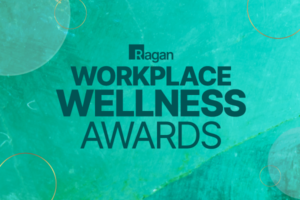The intersection of wellness, leadership and ESG initiatives
We spoke with Christine DiBartolo of FTI Consulting on how leaders can communicate about wellness through an ESG lens.

When we talk about wellness in the workplace, a wide number of topics come to mind — ranging from employee benefits to mental health programs and support. But how does the adoption of environmental, social and governance (ESG) policies, fit into this equation?
According to Christine DiBartolo, senior managing director at FTI Consulting, ESG work can go hand-in-hand with wellness initiatives, especially when it comes to what employees expect from their leaders. DiBartolo shared how workplace wellness can benefit employees at the organization and contribute to the health of the business at the same time.
Changing expectations of leadership
When the needs and demands of employees shift within an organization, they often look to their leaders to make those changes happen. FTI’s research shows that while mental health and wellness has remained a top priority of employees over the past few years, these matters have merged with other concerns like talent recruitment.
“In this time of economic uncertainty, employees want their leaders to be able to strike a balance between people and profit,” DiBartolo said. “The ability for employers to attract and retain talent is a critical part of maintaining the health of the business and wellness programs are a great pathway to doing so.”
According to FTI’s research, one in three employees and stakeholders said CEOs should make the wellness and retention of current employees a top priority. Additionally, 28% of employees cite accessibility as a desired trait in their leaders. DiBartolo said that being visible and showing that they’re focusing on the right things is a major priority among employees and stakeholders alike.
“Employees’ priorities for leadership are clear – protecting their physical and mental health, delivering incentives to stay with the company, and attracting top talent for continued success must remain a focus,” DiBartolo said. “Employees recognize, however, that their needs cannot be at the expense of business growth and opportunity. They also want to see CEOs focus on efficient operations, financial performance, and profitability.”
The importance of meaningful engagement
While knowing that their leadership is invested in employee wellness and business health is important to employees, they also want to know they’re standing up for something meaningful. That’s where ESG comes into play — whether it’s programs that support sustainability or initiatives to support LGBTQ+ employees, leaders should be clear and should consider how they’re using their communications to support them. Leaders should strive to show that their actions on wellness and ESG are genuine.
“Meaningful engagement on wellness and ESG is critical from leaders,” DiBartolo said, “because both internal and external stakeholders are going to want to know what the organization and the leaders really stand for/”
She added that CEOs should be an example to the rest of the organization, and the world beyond, of how to live the organization’s values each day.
“Now more than ever, you need to have leaders demonstrating that their actions back up their words with regard to ESG and wellness”, DiBartolo said. “Is there real engagement with the initiatives they claim to support? Do the policies back up their words?”
Knowing how and when to communicate
Leaders need to know what messages they’re putting out to their employees and the public. But there’s an art to knowing when and how to do it — particularly when it comes to topics like wellness that impact an employee’s daily life and ESG work that can have wider-reaching effects. To that end, leaders need to choose the right timing and methods to disseminate their messages.
DiBartolo added that leaders should be cognizant of how their messages might be perceived around wellness and ESG.
“We sometimes will see this around heightened social issues like access to healthcare or racial justice — leaders will make a statement. But the biggest problem we see is that sometimes, leaders don’t know what it is their employees want,” she said.
To ensure their ESG focus aligns with employee sentiment, leaders should practice active listening techniques and interact with employee resource groups to inform their messaging strategy around wellness and ESG.
“The reason that leaders sometimes hit the wrong note in their communications about wellness and ESG is that they assume what their employees want,” said DiBartolo. “Taking a more active stance will help not only the authenticity of the messaging for leaders but will create a more receptive audience, too.”
Sean Devlin is an editor at Ragan Communications. In his spare time he enjoys Philly sports, a good pint and ’90s trivia night.







